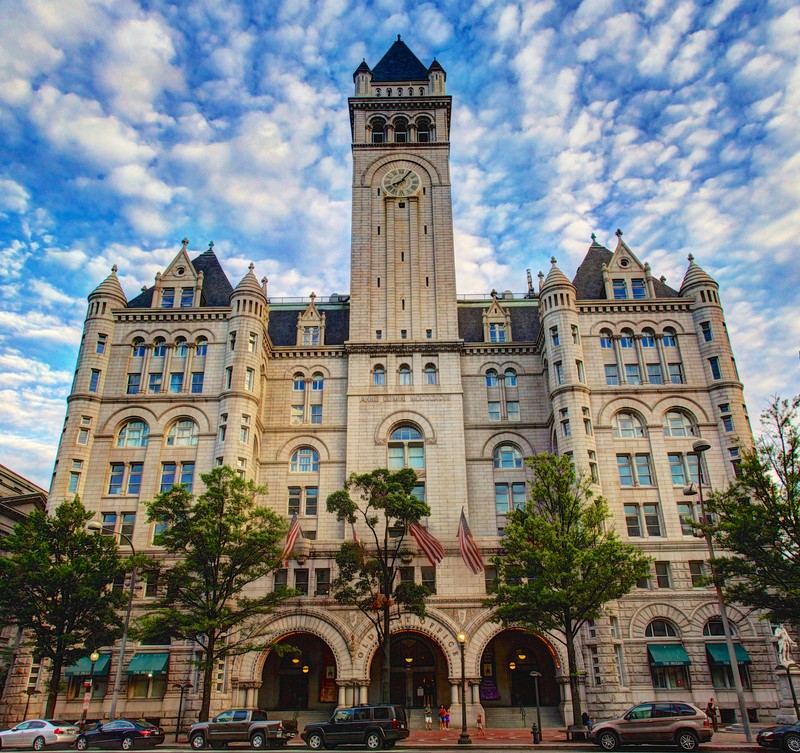Old Post Office Building and Pavilion
Introduction
Text-to-speech Audio
Images
A view of the Old Post Office Pavilion.

Backstory and Context
Text-to-speech Audio
The Old Post Office Pavilion, historically known as the Old Post Office and Clock Tower, once served as the main post office in Washington, D.C. In 1890, Congress filed for the construction of a new post office in the nation's capitol. Their intention was to provide a better facility, and bring life back into the area around the Capitol Building and the White House. Construction began in 1892 and, by 1899, the Post Office Building was complete.
Architecturally, the post office was constructed in
the fashion of a Romanesque Revival style (it is sometimes further classified as "Richardsonian Romanesque"). Willoughby J. Edbrooke was the chief architect responsible for the design of the building. At the time of its completion, the building contained the largest uninterrupted enclosed space in the Washington, D.C., was the city's first building to have a steel frame structure, and the first to be built with electrical wiring incorporated into its design. At its highest point, the clock tower, it was 315 feet tall.
Though there were great plans for the building while it was under construction, once it opened it was found to be structurally unsound, and that the technology employed was already outdated by the time it was complete. Moreover, the appearance of the building was widely criticized, most notably during the 1898 meeting of the American Institute of Architects. The anticipated economic development never occurred and the building was only partially occupied by government agencies, though these quickly became crowded. Calls for its demolition began to crop up as early as 1902 and, by 1928, the Post Office Building was actually slated to be demolished.
The demolition project never came, owing to the arrival of Great Depression. For the next 30 years, the Post Office Pavilion was home to several government agencies. It was not until 1964 that another
call for the building’s demolition was raised. This time, however, citizens and
preservationists banded together to preserve the structure. Congress was
convinced and, by 1977, a renovation project was underway.
The renovations created retail space and other accommodations, but it was not enough to keep the the Old Post Office Building from suffering financially.
Over the following decades, the Old Post Office was bought and sold in numerous attempts to re-use and rejuvenate the structure. In January 2001, the General Services Administration proposed converting the building into a hotel. On February 6, 2012, the G.S.A. announced that it had selected The Trump Organization as the potential redeveloper. The groundbreaking ceremony was held on July 2014, and the building reopened as the Trump International Hotel on September 12 of that year.
Currently, the Trump International Hotel is the third-tallest structure in the city, with a 70-foot-high observation deck. Visitors to the tower can view an exhibit on this history of the building, as well as see the interior workings of the clock. Additionally, the structure houses the official Bells of Congress (also known as the Ditchley Bells), which ring every Thursday evening and on special occasions, and are one of the largest sets of change ringing bells in the country.
